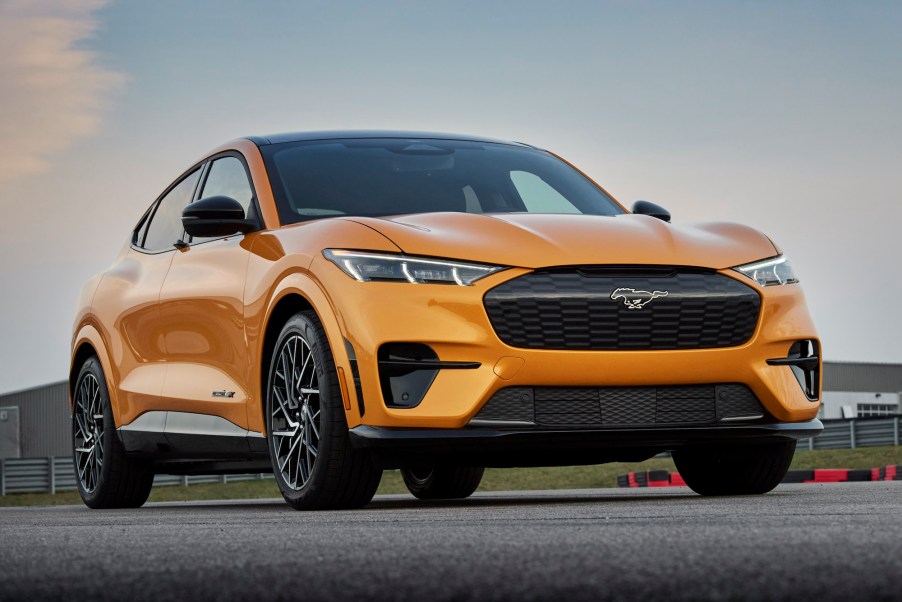
How to Get up to $7,500 off Your Next Ford, Including the New Mach-E
You’ve bought that all-electric or plug-in hybrid vehicle. Maybe you got one because it’s green. But the good news is that it could help put some green back in your pocket. That’s because a tax credit is available. The federal government creates these EV tax credits as incentives to get more consumers to buy electric vehicles. Not every electric vehicle is eligible, but the new 2021 Ford Mustang Mach-E is on the list.
The federal tax credit for electric and plug-in hybrid vehicles

A tax credit is available and covers qualified plug-in hybrid vehicles (PHEVs) and all-electric vehicles (EVs), including passenger vehicles and light trucks. The credit is for up to $7,500. It applies to EVs and PHEVs purchased after December 31, 2009, and placed in service in or after 2010. The credit is only for vehicles purchased new (not leased) and mainly used in the United States.
In addition, the vehicle must be considered a motor vehicle and have come from the factory as a PHEV or EV. Its gross vehicle weight rating should be less than or equal to 14,000 pounds. It should be significantly powered by an electric motor and an electric battery, which can be recharged and has a capacity not less than 4 kilowatt-hours, Fueleconomy.gov explains.
The credit amount is based on battery size and starts at $2,500. There is an additional $417 for “a vehicle which draws propulsion energy from a battery with at least 5 kilowatt-hours of capacity” and “an additional $417 for each kilowatt-hour of battery capacity in excess of 5 kilowatt-hours,” the IRS says. The credit is up to $7,500 but can’t be any larger than the total amount of tax that’s owed, though, Edmunds reports. It cannot be requested as a refund or applied to the next year’s taxes.
The credit begins to phase out for vehicles from manufacturers that have sold at least 200,000 qualifying vehicles. The sales are cumulative and start after December 31, 2009. However, Fueleconomy.gov adds that there may also be state and local incentives. In addition, a reform bill passing through Congress would increase and expand these tax credits.
The 2021 Mustang Mach-E and other eligible Ford vehicles
Ford is one of the many automakers with models eligible for the federal EV tax credit. For the 2021 model year, Ford and its luxury brand, Lincoln, offer four eligible options, including multiple versions of the Mustang Mach-E. The list includes the Lincoln Aviator Grand Touring (eligible for a $6,534 tax credit), Lincoln Corsair Reserve Grand Touring ($6,843), Ford Escape ($6,843), and 2021 Ford Mustang Mach-E ($7,500).
The Mustang Mach-E is the only all-electric vehicle Ford makes, and the credit is available for all of the EV’s trim levels. According to Ford, the Mach-E has a battery power of 68 kWh for the Standard Range model and 88 kWh for the Extended Range model. The other eligible 2021 Ford and Lincoln models are PHEVs.
How to get the federal tax credit for a Ford EV
You’ll need to fill out tax paperwork to claim the federal credit. If you have a qualified PHEV for personal use, complete IRS Form 8936, “Qualified Plug-in Electric Drive Motor Vehicle Credit,” with your taxes, and include the credit on your Form 1040. The tax credit applies toward the alternative minimum tax (AMT). If you have a qualified PHEV for business use, you’ll need to fill out IRS Form 3800, “General Business Credit,” instead.
The 2021 Ford Mustang Mach-E starts at $42,895. But with the full tax credit of $7,500, buyers will end up paying only $35,395 for this all-electric version of the iconic pony car.


